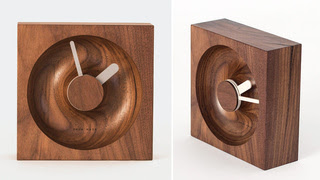You can't see gravity, right? It's just an invisible, natural force of attraction, created by mass, yeah? Well, almost—but in this image you can see its effects in still and breathtaking glory.
The ripples in the clouds of this images are known as gravity waves. NASA explains exactly what they are:
The ripples in the clouds of this images are known as gravity waves. NASA explains exactly what they are:
Thanks, gravity: as well as keeping us on the ground, you make the world a prettier place, too. More here.Offshore and to the west and southwest of Pukaskwa National Park, several distinct sets of parallel cloud bands are visible. Gravity waves are produced when moisture-laden air encounters imbalances in air density, such as might be expected when cool air flows over warmer air. This can cause the flowing air to oscillate up and down as it moves, causing clouds to condense as the air rises and cools and to evaporate away as the air sinks and warms. This produces parallel bands of clouds oriented perpendicular to the wind direction. The orientation of the cloud bands in this image, parallel to the coastlines, suggests that air flowing off of the land surfaces to the north is interacting with moist, stable air over the lake surface, creating gravity waves.
















